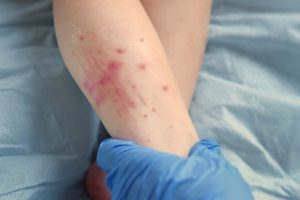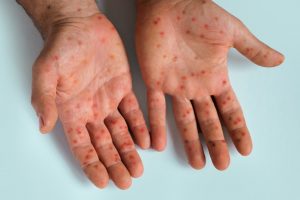Tendesayi Kufa-Chakezha, National Institute for Communicable Diseases
Sexually transmitted infections (STIs) are a serious public health issue. It’s estimated that globally, more than a million people are diagnosed with one or more sexually transmitted infections like gonorrhoea, chlamydia or syphilis every day. What’s more concerning is that the prevalence of infection with chlamydia for example, have remained unchanged over the past 10 years despite better screening in developed countries.
As the name suggests, STIs are spread mainly through sexual contact. This includes vaginal, anal and oral sex; some infections can also be spread by non-sexual means – for example, from mother to child during pregnancy or childbirth.
STIs can have devastating effects on sexual, reproductive and general health. They can also lead to a number of complications. If left untreated chlamydia and gonorrhoea can cause damage to reproductive organs and result in long term complications such as infertility. People can even die if certain STIs such as syphilis are left untreated, or if they have complications such as pelvic inflammatory disease in the case of chlamydia.
To make matters worse, STIs increase the risk of HIV infection and transmission. This is because the body’s response, which is meant to help fight the sexually transmitted infection, causes a concentration of “activated” immune cells in the infected area. It then becomes easy for HIV to infect and replicate in the immune cells that are “activated”.
So it’s cause for concern that South Africa, with – 7.9 million people living with HIV in 2017 – also has a high volume of STIs.
In 2017 there were an estimated 2.3 million new cases of gonorrhoea, 1.9 million new chlamydia cases and 23,175 new syphilis cases among women aged between 15 and 49. Among men of the same age there were an estimated 2.2 million new cases of gonorrhoea, 3.9 million new cases of chlamydia and 47,500 new cases of syphilis.
These high numbers of STI cases in South Africa have partly been due to inadequate prevention and treatment gaps. Some people with STIs such as chlamydia, may go untreated because they don’t show any symptoms.
Better STI screening for high risk clients – regardless of symptoms – and better training of healthcare workers is necessary. In addition, structural problems such as limited access to client-friendly STI detection and treatment services need to be addressed. Of course, all of this costs money, which is in short supply. That’s why the need for better prevention cannot be overstated.
STI prevention in the past
Prevention of STIs other than HIV has largely taken a backseat while the country focused on HIV prevention. HIV prevention concentrated on reducing the number of sexual partners people have, increasing the correct and consistent use of condoms, early detection and treatment, and promotion of male circumcision. These measures were of some benefit in preventing other STIs.
But the increasing availability of antiretroviral drugs and advances in research have brought a new message to people living with HIV: an HIV positive person with an undetectable viral load can’t transmit the virus to their HIV negative partner.
This message, however, does not directly address the transmission of STIs other than HIV. It focuses on HIV and how to manage it, but forgets that people with HIV may be vulnerable to other STIs.
Pre-exposure prophylaxis – another HIV prevention tool – involves taking antiretroviral medication to prevent HIV infection. Research has shown that, if taken consistently and as intended, it can reduce the risk of acquiring HIV. But pre-exposure prophylaxis doesn’t protect people from other STIs.
Services to test for and treat STIs are included in pre-exposure prophylaxis services as a way of assessing levels of unprotected sex and sexual risk taking among users. But the take home message about the prevention of STIs in these settings is not clear. What counselling on STIs are pre-exposure prophylaxis clients receiving or should they be receiving? How should pre-exposure prophylaxis be promoted without compromising STI prevention?
Renewed focus on STI prevention
Strategies to prevent STIs must take into account the changes and advances in HIV prevention and treatment. Policies must answer a number of questions.
For instance, how can having fewer sexual partners, the correct and consistent use of condoms, the early STI detection and treatment of oneself and one’s partners, and male circumcision be made “fashionable” when HIV is not the death sentence that it used to be?
And what’s the best way to communicate that the knowledge of infections in oneself and the partner are key to preventing both HIV and other STIs?
It’s also important to explore how best to design prevention services that communicate how STIs and HIV happen in the context of transient, short-term or longer relationships. Policy makers need to understand, too, how people can be empowered to form, maintain or terminate relationships in a manner that does not place them in harm’s way with respect to HIV, STIs or intimate partner violence.
All of these issues must be urgently considered if South Africa is to tackle its STI problem as effectively as it’s been able to deal with HIV.![]()
Tendesayi Kufa-Chakezha, Epidemiologist and Public Health Specialist, National Institute for Communicable Diseases
This article is republished from The Conversation under a Creative Commons license. Read the original article.





